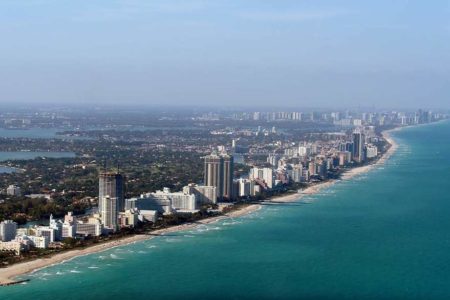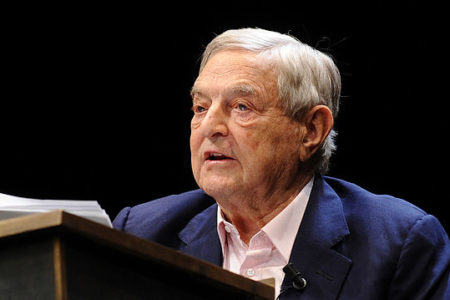
Photo by Mstyslav Chernov
In the first part of this series, as many surveys have shown, we saw how difficult it has been, and apparently remains, for many Muslims to be assimilated into non-Muslim societies.
In Part Two, we examined how difficult it remains to allow Syrian and other refugees even to settle into other Muslim and Arab countries, including places such as Turkey, Lebanon, Iraq, and Jordan, which have taken in millions.
In this final part, we shall look at the remaining Muslim countries, which have taken in few or no refugees from the Syrian civil war. These are the richest countries in the Arab world, and the least troubled by disintegration. Many are generous in their funding for humanitarian aid, but that money is donated on the understanding that the refugees are looked after by the UNHCR and the countries they have already reached. Seeing why may be a help.
In 2014, Amnesty International published a short article, “Facts and Figures: Syria refugee crisis & international resettlement”, in which it stated that “The six Gulf countries – Qatar, United Arab Emirates, Saudi Arabia, Kuwait and Bahrain – have offered zero resettlement places to Syrian refugees”.
This conclusion was echoed Deutsche Welle, the BBC, Time magazine, CNN, the Washington Post , the Huffington Post, the Jerusalem Post and other media. The most detailed report, however, came from the Brookings Institution in a September 2015 article by Luay Al-Khateeb, a prominent Arab expert on the geopolitics and economics of the GCC. Al-Khateeb noted that:
“condemnation of the Gulf Cooperation Council (GCC) stance on the region’s refugee crisis has reached a crescendo… they have countered criticism by asking the world to do more.
“The GCC, it is pointed out, has nonetheless given more money for refugees than any other [country].” [1]
As early as 2013, this amounted to $40 billion. Despite this generosity, the bulk of GCC aid money goes to other Muslim states, notably Egypt and Morocco, which, as noted in Part Two, have taken almost no refugees.
At this point, things become murkier. In 2015, Alex Nowrasteh, writing for Newsweek, argued that there are more Arabs and Muslims living in Arab and Muslim lands than ever before:
Many more Syrians are living in Saudi Arabia and the Gulf States than at the beginning of the Syrian civil war in 2011.
The World Bank reports that 1,000,000 Syrians resided in Saudi Arabia in 2013, a whopping 795% increase over 2010. There were 1,375,064 Syrian migrants living in the Gulf States in 2013, a 470% increase over 2010.
Excluding Oman, the 2013 Syrian population in every Gulf State has increased dramatically since right before the beginning of the Syrian civil war.
Others have also taken up cudgels on behalf of the GCC countries. Open Source Investigations, writing in December 2015, argued that the story about GCC failure to receive refugees is “a myth”. Just before that, the Guardian opined that Saudi Arabia had said criticism of their refugee response was “false and misleading”. The humanitarian organization HumanRefuge(e) published an article entitled “How Many Syrians Let in by the Gulf States?”
The HumanRefuge(e) post even features a map that purports to show high numbers of Syrian refugees who have been settled in Saudi Arabia.[2]
Why is there such a discrepancy between these two accounts: on the one hand, that the Gulf states have taken in no refugees and, on the other, that they have taken large numbers?
The explanation given by HumanRefuge(e), Open Source Investigations, the Saudi government and others hinges (or appears to hinge) on the fact that:
The UNHCR counts refugees using the 1951 Refugee Convention, among other protocols. Gulf states like Saudi Arabia, Kuwait, Qatar, and the UAE did not sign any UN protocols on refugees, so most refugees residing in these areas aren’t counted by agencies like the UNHCR.
A clearer explanation is given by Chaker Khazaal, commenting on a 2014 report by Amnesty International:
The reason it’s difficult to establish just how many refugees are being hosted by countries in the GCC is because they do not officially recognize incoming asylum-seekers as refugees. Since the GCC is not a signatory of the United Nations’ 1951 Refugee Convention, they are not bound by law to provide these people with the standard treatment and rights typically afforded those seeking refuge in a new country.
Admittedly, while the Arab states of the GCC might not have officially resettled any of the Syrian refugees, it would be incorrect to say that Arab states have not received any of the millions of Syrians who have been displaced since the civil war began.
The problem is that being an official refugee and being a guest of a GCC work-sponsorship program are not one and the same. The most significant difference is that official refugees in countries that have agreed to the 1951 Refugee Convention are eligible to become citizens after a certain period of time.
There are (or have been) a lot of Syrians in some of the countries in question. But these are migrant workers, not people fleeing from the civil war. Instead of treating these workers as asylum seekers entitled to the rights of resettlement and citizenship, the Gulf states are trying hard to expel them.
Saudi Arabia, for example, has experienced physical and social decline from its migrant population. Dr Khalid Mandeli (PhD from Newcastle University), a lecturer at Jeddah’s King AbdulAziz University, has published a number of articles that show concerns about the impact of migrant workers living in slum areas.[3] Their presence goes back to the 1970s, when the country brought in cheap foreign labour after the oil boom and religious awakening of the period.
By 2013, the Saudi government had embarked on a “Saudization” campaign that aims to remove foreign workers in order to put more Saudis to work. The result has been alarming:
Until recently, of the kingdom’s 30 million residents, more than nine million were non-Saudis. Since the labour crackdown started in March, one million Bangladeshis, Indians, Filipinos, Nepalis, Pakistanis and Yemenis have left. And the campaign has moved into higher gear after the final deadline expired on 4 November, with dozens of repatriation flights now taking place every day. By next year, two million migrants will have gone.
In 2015, Human Rights Watch published a short report on the issue: “Detained, Beaten, Deported: Saudi Abuses against Migrants during Mass Expulsions”. The report noted that:
None of the workers interviewed were allowed to challenge their deportations or apply for asylum. Saudi Arabia has not established an asylum system under which migrants could prevent their forced return to places where their lives or freedom would be threatened.
Is it plausible, however, that a country that sees foreigners as a problem and has no asylum system in place has brought in as many as two million Syrian refugees to add to their woes?
The same problem apparently lies behind the rejection of refugees in the rest of the region. Khazaal notes that:
The mass deportation of workers is considered to be a result of the region’s reported attempts to prioritize giving employment opportunities to their local citizens. There is also widespread perception that Syrians wishing to seek refuge in the Gulf states are unlikely to be granted a visa in the first place.
This was confirmed by the BBC:
Although those fleeing the Syrian crisis have for several years been crossing into Lebanon, Jordan and Turkey in huge numbers, entering other Arab states – especially in the Gulf – is far less straightforward.
Officially, Syrians can apply for a tourist visa or work permit in order to enter a Gulf state.
But the process is costly, and there is a widespread perception that many Gulf states have unwritten restrictions in place that make it hard for Syrians to be granted a visa in practice.
In 2017, UNHCR reported on a “landmark agreement” between themselves and Kuwait to aid Syrian refugees. Good news, but it is important to read the small print. The agreement is worth $10 million and is aimed “to improve the living conditions of Syrian refugees in northern Iraq”. But, given that Kurdistan is linguistically and culturally different from Syria, those refugees will find it hard, almost impossible, to settle there. Kuwait’s money will only ease refugees living in camps.
Bahrain fits the same narrative. In March 2018 Bahrain pledged a mere $2 million “to build schools in the Zaatari Refugee Camp in Jordan”. That is small help for a country already highly pressurized by the numbers of refugees it has taken. This too is not a solution.
The UAE boasted in 2016 that is planning to take in 15,000 refugees over the following five years — three thousand a year. But the long-term prospects of those refugees are not encouraging. Reem Al Hashemi, the UAE’s minister of state for international cooperation explained that:
Ultimately, we must offer a source of hope for displaced persons that allows them to maintain dignity, return home, reintegrate themselves into their societies, and rebuild their countries and their lives. [Emphasis in original.]
Whereas refugees arriving under the UNHCR are entitled to be granted asylum and eventually citizenship, the UAE is clear from the start that it wants to send its refugees back home. Back home to what? To a half-ruined country still ruled by one of history’s most brutal dictators hand-in-hand with Iran, Russia, and Hizbullah? To Eastern Ghouta? To Aleppo, Homs, Hama, Lattakia, Deir al-Zur, al-Raqqa, Tartus, Daraa, al-Hasakeh, al-Qamishli? In order to “maintain their dignity… reintegrate themselves… and rebuild their countries and their lives”?
This is the response from the sixth richest country in the world (taking the Emirates together)? The second richest in the Arab world (after Saudi Arabia)? Where Abu Dhabi has been described as “the richest city in the world”?
What of Qatar, ranked by Fortune magazine in 2017 as the richest country in the world per capita? Qatar houses a large number of migrant workers, mainly Pakistani and Indian, with three out of four residents male. The migrants make up 94% of the country’s workforce and 70% of its total population. In January 2017, Qatar offered to house Salvadorans who may be expelled from the United States. But they would be admitted on a temporary basis only. The treatment of migrant workers by the state, however, has been strongly condemned by the European Parliament and others. A report by the BBC in 2015 gives some details.
Conclusion
As the years pass, as more and more countries struggle with poverty, conflict, religious extremism, terrorism, ethnic divisions, governmental incapacity, corruption, and declining levels of education, huge sections of the world’s rapidly growing population will look in vain for safe places in which to live, work, and raise their families. The Western states who support the UNHCR cannot possibly handle this without suffering internal decline.
This decline in many parts of the world will accelerate the growth of refugee and migrant populations, creating a downward spiral that will drag down even the more affluent countries. According to Paul Ehrlich, “Collapse of Civilization is a near certainty within decades”. The failure of so many Islamic states and the refusal of some of the richest countries in the world to do much to help, alongside their expenditure of billions of dollars over many years to spread the radicalization of Islam and finance Islamic terrorism, is one of the greatest problems facing the modern world and challenging the democracies.
This situation theoretically calls for major intervention by the United Nations, but the UN is effectively controlled by the very countries that are causing or contributing to the problem. With the Organization of Islamic Cooperation adding to the pressures on the democracies by working in the interest of Muslim states, it is time for a response. But so far, the Western nations have shown no willingness to create one.
[1] Saudi Arabia and Qatar have provided some $900 million in humanitarian aid to Syrians. The United Arab Emirates have donated $530 million in aid since 2012. Problematically, the UN High Commissioner for Refugees’ Syria Regional Response Plan has requested another $4.5 billion, to ensure basic dietary and sanitation conditions in the refugee camps.
[2] Saudi Arabia (500,00 to 2.5 m.), Kuwait (120,000), Bahrain (1,750), Qatar (19,000 to 25,000), and the United Arab Emirates (242,000).
[3] E.g. Khalid Nasralden Mandeli, “The realities of integrating physical planning and local management into urban development: A case study of Jeddah, Saudi Arabia”, Habitat International 32 (2008) 512–533






Recent Comments